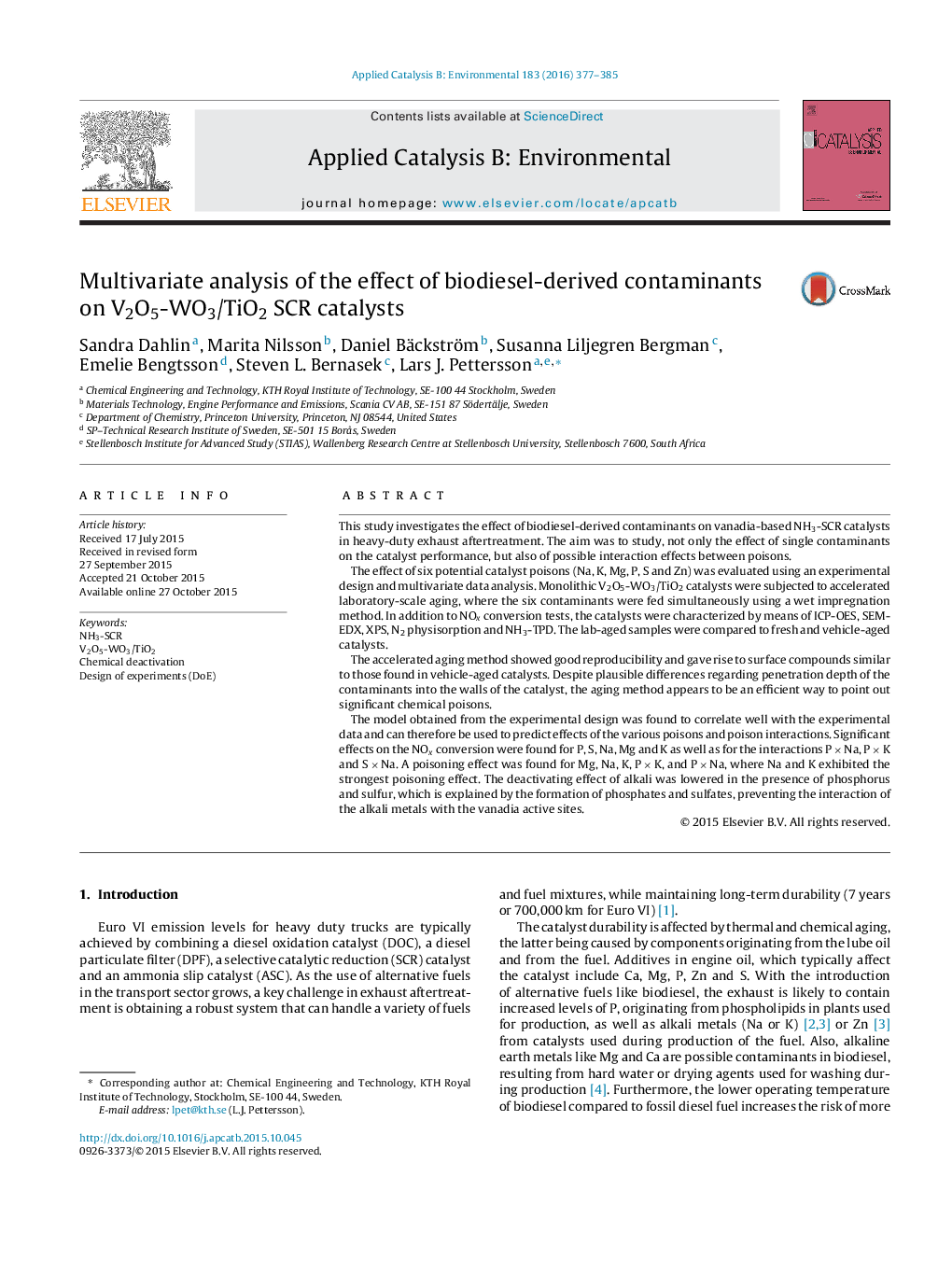| Article ID | Journal | Published Year | Pages | File Type |
|---|---|---|---|---|
| 45167 | Applied Catalysis B: Environmental | 2016 | 9 Pages |
•A multivariate regression model is used to predict the effects of various poisons and poison interactions on an SCR catalyst.•Na and K has the strongest negative effect on NOx conversion.•Mg, P × K and P × Na also results in significant catalyst deactivation.•The interactions of P with alkali decreases the poisoning effect.
This study investigates the effect of biodiesel-derived contaminants on vanadia-based NH3-SCR catalysts in heavy-duty exhaust aftertreatment. The aim was to study, not only the effect of single contaminants on the catalyst performance, but also of possible interaction effects between poisons.The effect of six potential catalyst poisons (Na, K, Mg, P, S and Zn) was evaluated using an experimental design and multivariate data analysis. Monolithic V2O5-WO3/TiO2 catalysts were subjected to accelerated laboratory-scale aging, where the six contaminants were fed simultaneously using a wet impregnation method. In addition to NOx conversion tests, the catalysts were characterized by means of ICP-OES, SEM-EDX, XPS, N2 physisorption and NH3-TPD. The lab-aged samples were compared to fresh and vehicle-aged catalysts.The accelerated aging method showed good reproducibility and gave rise to surface compounds similar to those found in vehicle-aged catalysts. Despite plausible differences regarding penetration depth of the contaminants into the walls of the catalyst, the aging method appears to be an efficient way to point out significant chemical poisons.The model obtained from the experimental design was found to correlate well with the experimental data and can therefore be used to predict effects of the various poisons and poison interactions. Significant effects on the NOx conversion were found for P, S, Na, Mg and K as well as for the interactions P × Na, P × K and S × Na. A poisoning effect was found for Mg, Na, K, P × K, and P × Na, where Na and K exhibited the strongest poisoning effect. The deactivating effect of alkali was lowered in the presence of phosphorus and sulfur, which is explained by the formation of phosphates and sulfates, preventing the interaction of the alkali metals with the vanadia active sites.
Graphical abstractFigure optionsDownload full-size imageDownload as PowerPoint slide
